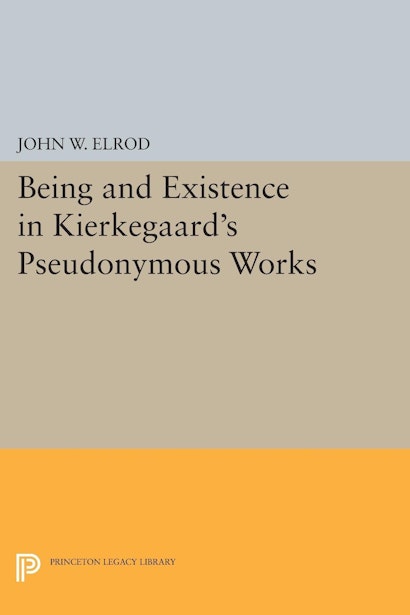Being and Existence in Kierkegaard's Pseudonymous Works


Hardcover
- Price:
- $120.00/£100.00
- ISBN:
- Published:
- Apr 19, 2016
- Copyright:
- 1975
- Pages:
- 284
- Size:
- 6 x 9.25 in.
- Main_subject:
- Philosophy
Paperback
ebook
In this study John W. Elrod demonstrates that Kierkegaard’s pseudonymous writings have an ontological foundation that unites the disparate elements of these books. The descriptions of the different stages of human development are not fully understandable, the author argues, without an awareness of the role played by this ontology in Kierkegaard’s analysis of human existence.
Kierkegaard contends that the self is a synthesis of finitude and infinitude, body and soul, reality and ideality, necessity and possibility, and time and eternity. Each of these syntheses reveals a particular and unique aspect of individual being not disclosed in the others. Part One shows that ontology is central to the discussion of the self in the pseudonyms. The author notes that spirit, as a synthesis of the expressions of the self, develops as consciousness and freedom. In Part Two he indicates the relationship between notions of being and existence. He notes that existence, in Kierkegaard’s thought, grows out of the life of the spirit; the different stages of existence are concrete modes that develop in the spirit’s striving to unify the self as a synthesis. These existential expressions of spirit are dialectically related, in that each step requires the preceding stages of spiritual development.
Originally published in 1975.
The Princeton Legacy Library uses the latest print-on-demand technology to again make available previously out-of-print books from the distinguished backlist of Princeton University Press. These editions preserve the original texts of these important books while presenting them in durable paperback and hardcover editions. The goal of the Princeton Legacy Library is to vastly increase access to the rich scholarly heritage found in the thousands of books published by Princeton University Press since its founding in 1905.